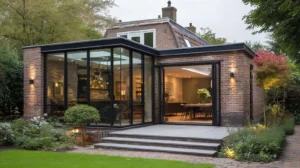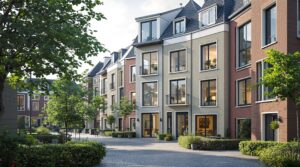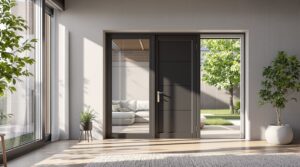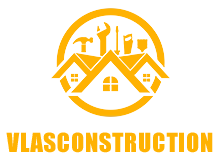3D Printed Elements in Home Renovations: Windows and Doors of Tomorrow
As the construction industry in the Netherlands continues to evolve, innovative technologies like 3D printing are transforming the way homes are renovated and extended. One of the most exciting developments is the integration of 3D printed elements, such as windows and doors, into home renovations. This article explores the potential of 3D printed components in Dutch home renovations, highlighting their benefits, current trends, and future possibilities.
Basic Concepts
Before diving into the specifics of 3D printed windows and doors, it’s essential to understand the basics of 3D printing in construction. 3D printing, or additive manufacturing, involves creating objects layer by layer from digital models. In construction, this often involves using concrete or polymers to create building components. The technology offers several advantages, including reduced material waste, increased precision, and the ability to create complex shapes that would be difficult or impossible with traditional methods.
Benefits of 3D Printed Elements in Home Renovations
3D printed elements can significantly enhance home renovations by offering several key benefits:
- Sustainability: 3D printing reduces waste by using only the necessary amount of material, making it a more sustainable option compared to traditional construction methods.
- Customization: The technology allows for the creation of customized shapes and designs, which can be particularly appealing for homeowners looking to add unique features to their homes.
- Efficiency: Construction time can be reduced as 3D printed components are often prefabricated, streamlining the renovation process.
- Cost-Effectiveness: While the initial investment in 3D printing technology can be high, the long-term savings from reduced material waste and labor costs can be substantial.
Current Trends in 3D Printed Windows and Doors in the Netherlands
While 3D printed windows and doors are not yet widely available, the Netherlands is at the forefront of 3D printing technology in construction. Projects like the first 3D printed house in the Netherlands demonstrate the country’s commitment to innovative building techniques. However, the focus has primarily been on structural elements like walls and foundations. The next step involves integrating 3D printed components into more detailed aspects of home renovations, such as windows and doors.
Challenges and Opportunities
Despite the potential benefits, there are challenges to overcome before 3D printed windows and doors become mainstream:
- Regulatory Frameworks: Ensuring compliance with building codes and regulations is crucial for the widespread adoption of 3D printed components.
- Material Development: Developing materials that meet the durability and performance standards of traditional windows and doors is essential.
- Public Perception: Educating homeowners about the benefits of 3D printed components can help increase demand and drive innovation.
Future of Dutch Home Renovations
The future of home renovations in the Netherlands looks promising with the integration of 3D printing technology. As the technology advances, we can expect to see more complex and customized components, including windows and doors, being used in renovations. This could lead to homes that are not only more sustainable and efficient but also uniquely designed to meet individual tastes.
Practical Tips for Homeowners Considering 3D Printed Elements
For homeowners interested in incorporating 3D printed elements into their renovations, here are some practical tips:
- Research Local Providers: Look for companies in the Netherlands that specialize in 3D printing for construction to understand the available options and costs.
- Consult with Architects and Engineers: Ensure that any 3D printed components are designed and integrated into your home’s structure safely and effectively.
- Consider Sustainability and Customization: Think about how 3D printed elements can enhance your home’s sustainability and unique design.
Conclusion
3D printed windows and doors represent a promising future for home renovations in the Netherlands. As the technology continues to evolve, it’s likely that we’ll see more innovative applications of 3D printing in construction. By embracing these advancements, homeowners can create homes that are not only more sustainable and efficient but also uniquely tailored to their needs and tastes.
Table: Comparison of Traditional vs. 3D Printed Construction Elements
| Feature | Traditional Construction | 3D Printed Construction |
|---|---|---|
| Material Waste | Significant waste due to formwork and excess material | Minimal waste as material is used precisely |
| Customization | Limited by traditional manufacturing techniques | Highly customizable with complex shapes possible |
| Construction Time | Often longer due to manual labor and formwork setup | Faster with prefabricated components |
| Cost-Effectiveness | Higher upfront costs due to labor and material waste | Potential for long-term savings through reduced waste and labor |
This table highlights the key differences between traditional construction methods and 3D printing, emphasizing the potential benefits of adopting innovative technologies in home renovations.








